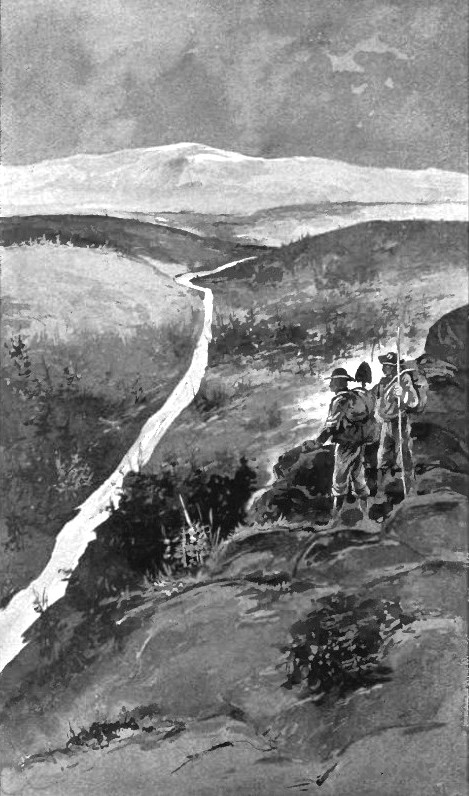Bauxite forms compact, earthy, also very commonly pisolitic masses, the individual concretions often having a diameter of several centimeters. It is gray, cream-colored, yellowish or brown and is usually admixed with silica and ferric oxide. Its occurrence and structure lend probability to the view that it has originated as a colloid precipitate. The bauxites contain in places crystalline gibbsite as crusts or veinlets; diaspore has been identified more rarely and quite naturally as it usually formed at higher temperature than that prevailing in residual deposits. The bauxites always contain titanium, averaging as much as 4 per cent. Ti02, and some vanadium but in this they merely share the peculiarities of residual and sedimentary clays. Some investigators state that bauxite contains residual rutile while others have failed to find any titanium mineral. Most probably the titanic dioxide is present in colloid state.
Clay, as more or less impure kaolin, is the most abundant product of rock decay, but although it carries 39.8 per cent, alumina its use as a source of metallic aluminum has not been found possible. Corundum is not abundant enough to be used for this purpose. Cryolite (Na3AlFl 6), a rare mineral obtained from pegmatitic masses occurring in Greenland, was formerly an important aluminum ore and is still used, in smaller quantities, in the electrolytic processes for the extraction of aluminum. In certain places the weathered zone, however, contains the hydroxides of aluminum in the form of bauxite, and this is the most important aluminum ore. The independence of bauxite as a mineral species was long questioned and even a century ago many authors considered it a hardened and in part crystallized hydrogel of indefinite composition. Bauxite has been identified as consisting of three aluminum hydroxides: diaspore, gibbsite and boehmite.
Little or no hydroxide of
aluminum forms in ordinary rock weathering. Geologists have shown that
during an examination of several thousand soil samples from all parts of the
United States, hydroxide of aluminum was observed in only one sample, which
came from southern California. Bauxite, it may be concluded, is thus rarely
formed in temperate regions. In tropical countries, on the other hand, the
deep residual soil very often contains aluminum hydroxide. This has been
called laterite (later, brick) and is variously defined. We may say that
true laterite is essentially a mixture of the hydroxides of iron and
aluminum with more or less free silica, but there are all gradations toward
ordinary ferruginous clay. The laterite may be derived from any igneous or
sedimentary rock but serpentine and
limestone are especially favorable. The iron ore from Mayari,
Cuba is a laterite exceptionally rich in iron. Many so-called laterites are
not true residual but transported deposits. Laterites may or may not contain
bauxite of economic value; they have been described from many lands and the
literature is very extensive.
In apparent contradiction to this many well known bauxite deposits are found
in temperate regions such as Georgia, Arkansas, France, Hungary, etc., but
this is explained by the fact that these are not being formed at the present
time but are of Tertiary and older ages when a tropical climate like that of
Cuba prevailed in large parts of these temperate zones. The desilication of
clay in the warmer latitudes has been discussed extensively. The action of
nitric acid, supposedly derived from rain during tropical thunderstorms, has
been suggested as the cause. Some have also mentioned the possibility of
bacterial action. Clay is decomposed by sulfuric acid and by sodium
hydroxide or sodium carbonate and at some places aluminum hydroxide may have
originated in this way. This origin for some of the soils of Hawaiian
volcanoes and it applies also to a deposit of alum and bauxite on the upper
Gila River in New Mexico. Nevertheless it is clear that sulfuric acid does
not always produce this effect, for diaspore and hydrargillite occur rarely
(Rosita Hills, Colorado; Goldfield, Nevada) in the oxidized portions of
mineral deposits where sericitic rocks are acted upon by sulfuric acid
solutions.
Bauxite also has rarely been observed. In the oxidized zone the sulfuric
acid transforms sericite into kaolin, which is frequently accompanied by
more or less
alunite. These suggestions do not suffice to explain the formation
of the lateritic aluminum hydroxides. It is now generally conceded that this
is caused simply by the long continued action of ordinary ground waters
under special conditions of moisture and heat. Geologists have shown that
there is a complete gradation in case of the Arkansas deposits from the
original syenite that the pisolitic structure develops in place and that
residual syenite boulders are surrounded by bauxitic material. The texture
of the syenite is sometimes visible in the pisolitic bauxite. There is some
evidence of downward leaching of the bauxite, for the top layer is usually
more siliceous than the lower parts of the deposit. Some bauxites occurring
as vein like masses in limestone of France and Hungary have been explained
as the result of the action of ascending waters carrying aluminum sulphate
on limestone. Such a mode of origin is admittedly possible.
UNITED STATES. The bauxite deposits of commercial importance in the
United States are confined to Arkansas and the southern Appalachian States.
The region is one of folded Paleozoic sedimentary rocks intruded by large
bodies of nepheline syenite. These rocks were eroded and locally were
extensively weathered. By weathering the syenite, which contains about 27
per cent, of alumina in silicates, was converted to bauxite ore, which
contains about 37 to 57 percent alumina as the hydrated oxide. The
sedimentary bauxites of which numerous examples may be found in Georgia and
Arkansas in the Cretaceous and Tertiary beds are probably deposits swept out
into the sea by the normal processes of erosion from bauxite rich laterites
on the shore. In Arkansas the mineral occurs in Pulaski and Saline counties
as superficial beds over areas of various sizes up to 20 acres. The deposits
are only exceptionally more than 10 feet in depth. They rest on nepheline
syenite or on a kaolinized form of that rock; the lower part retains traces
of granitic structure, while the upper part is distinctly pisolitic.
Tertiary sands and clays in places cover the nepheline syenite and the
bauxite. Other deposits of importance, described by Hayes and also by
Watson, are found at a number of places in Georgia and Alabama. The
principal occurrences are scattered between Jacksonville, Alabama and
Cartersville, Georgia, along a belt about 60 miles in length, one of the
typical localities being at Rock Run. Arkansas was the chief producer, but
bauxite was also mined in Georgia, Alabama, and Tennessee.
The bauxite occurs as
pockets and irregular masses or curved strata of various colors, with clay
and
limonite, in the heavy mantle of residual clay overlying the
Knox (Cambrian)
dolomite, but sharply separated from it. The ore is in part
pisolitic and is mined in open cuts, at some places to a depth of 50 feet or
more. .The bottom of the clay masses is rarely exposed; before it is reached
the pockets of bauxite generally terminate in tapering points. Occasionally
associated minerals are gibbsite and halloysite, which is similar to kaolin
in composition but has more water. A suggestive fact is the occurrence of
the deposits at or about the 900-foot contour, which coincides with the
elevation of a probable Eocene peneplain. The ores were thus accumulated
under topographic and climatic conditions different from those which prevail
today. Near Keenburg, Carter County, Tenn., bauxite is found as a large,
irregular, deep pocket deposit in residual material resulting from the
decomposition of the Knox dolomite.
FRANCE. Bauxite occurs extensively and is mined in the Departments of
Var and Herault in southern France. At Baux, from which locality the mineral
takes its name, it occurs in a sedimentary series of Cretaceous age
associated with beds of limestone,
sandstone, and clay. In this and other cases where bauxite is
found in sedimentary strata the bauxite represents an interruption of the
stratigraphical sequence, and was presumably formed by the weathering of
argillaceous material during a period of emergence. In Puy-de-D6me, bauxite
deposits occur in association with
gneiss and
basalt, from which they have arisen as products of decomposition.
IRELAND. Bauxite is mined at various localities in County Antrim, where
it has been formed by the atmospheric weathering of basalt and other
volcanic rocks during early tertiary times. It occurs associated with
lithomarge forming a layer between the older and younger Tertiary basalts.
Typical sections showing the relation of bauxite to .basalt in Antrim are
those seen at Irish Hill, Straid. One section at this locality shows a layer
of bauxite from 3 to 7 feet thick lying on lithomarge, this in its turn
lying on a mass of older basalt from which 'it has been derived; and
overlying the bauxite layer is the younger basalt. Some sections at this
locality show the bauxite interbedded with lignite coal, whilst in other
sections the bauxite is missing, its place being taken by a layer of
pisolitic iron ore.
ITALY: Bauxite was mined at Pescosolido in the Terra di Lavoro district
of Abruzzi, where it occurs interbedded with Cretaceous limestone.
OTHER LOCALITIES. Some of the laterite deposits of India consist of
typical bauxite. Typical concretionary bauxites containing a low percentage
of silica but a rather high percentage of titanium, occur at Katni in the
Central Provinces. The Indian deposits have only been worked to a
significant extent hitherto, and have become of great commercial importance
in the future. Bauxites of the ferruginous and non-ferruginous types, some
of which are concretionary, occur in many parts of West Africa, in some
places forming extensive deposits, as at Mt. Ejuanema in the Kwahu district
of Ghana. The bauxites of the Guianas in South America are stated to occur
in extensive deposits, and some of them are of very good quality, containing
low percentages of iron and titanium oxides and silica. The bauxite of
Christianburg on the Demerara River in British Guiana contains up to 67 per
cent, of alumina and is of excellent quality. Large deposits of bauxite,
estimated to contain about 20,000,000 tons of the mineral, occur in the
Bihar Mountains of Western Rumania, where they are associated with Jurassic
limestones. These Romanian bauxites are of the ferruginous type, containing
from 50 to 65 per cent, of alumina, 20 to 30 of iron oxide, 2 or 3 of
titanium dioxide, 1 or 2 of silica, and 11 to 12 per cent, of water. Other
deposits of note are those of Croatia (Sebenico, Dernis, and other
localities) and Herzegovina, from which the European powers obtained
supplies during the 1900s. Large amounts of bauxite also come from
Australia.
Return
to Metal Ores Page:
Precious and Base Metal Ores


